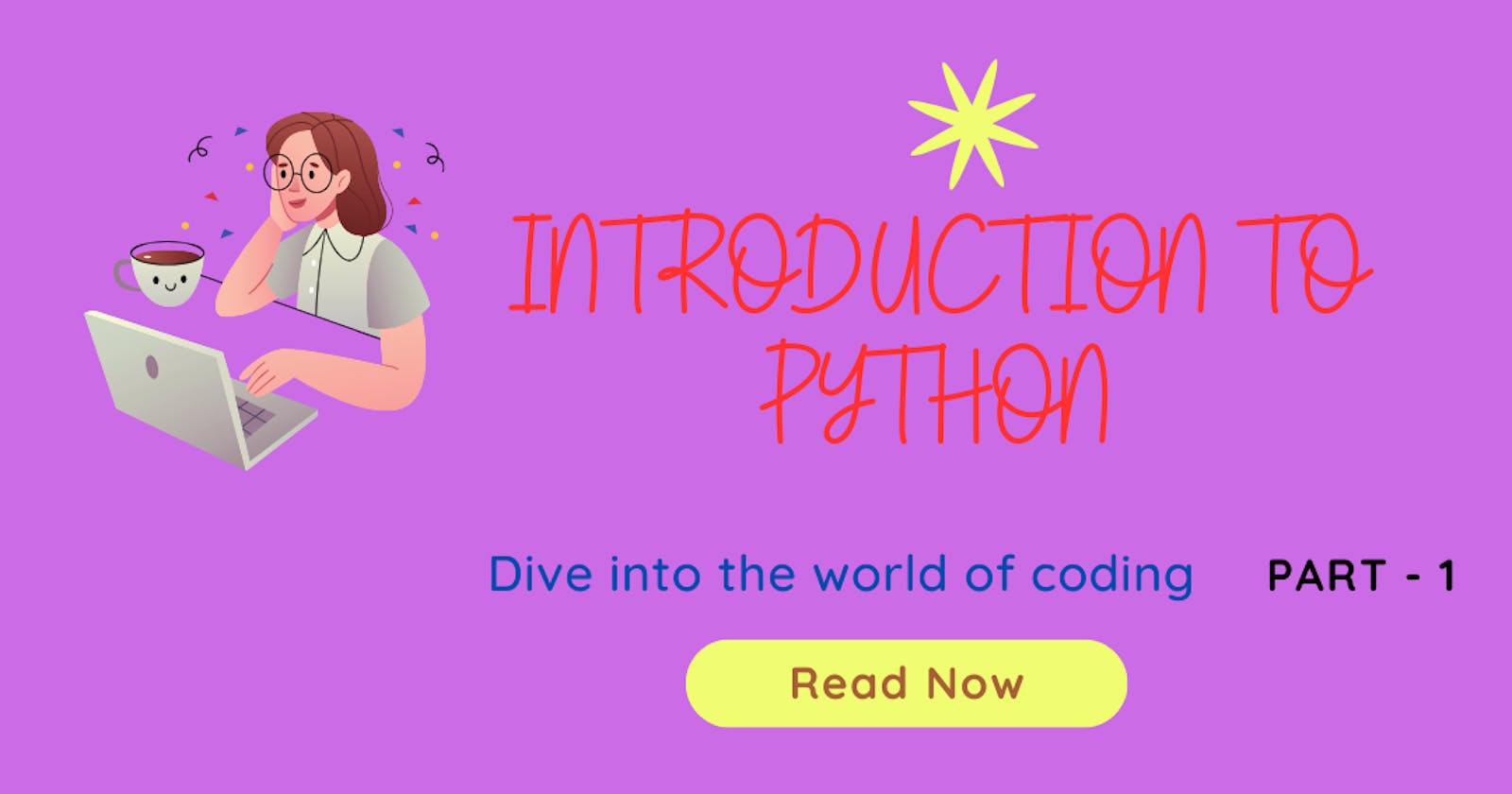Introduction to Python
"Learn the Fundamentals of Python Programming: An Introduction to Python for Beginners"
What is Python?
Python is a popular programming language.
Python was created by Guido Van Rossum and released in 1991.
Applications of Python?
Web Development: Python is often used for back-end web development, it could handle large amounts of data and integrate it with other technologies.
Popular web frameworks include Django and Flask.
Scientific Computing and Data Analysis: Python has a variety of libraries and modules that make it well-suited for scientific computing and data analysis, such as NumPy and Pandas.
Artificial Intelligence and Machine Learning: Python has several powerful libraries and frameworks for AI and machine learning, such as TensorFlow and Sci-kit-learn, making it a popular choice for building intelligent applications.
Game Development: Python can be used for game development using libraries such as Pygame.
Desktop Applications: Python can also be used to create desktop applications using libraries such as Tkinter and PyQt.
Automation: Python can be used for the automation of repetitive tasks, web scraping, and data extraction.
Networking: Python has libraries like Scapy and Paramiko which can be used for network automation and network security.
Internet of Things: Python can be used to develop IoT applications by interfacing with microcontrollers and sensors.
Financial analysis: Python has libraries like Pandas, NumPy, and Matplotlib which can be used for financial analysis and modelling.
Why Python?
Python can be used on different platforms. ie., Windows, MAC, Linux etc.
Python has a simple syntax which is similar to the English Language.
Python has an added advantage where less code can be written which acts as an advantage to the developers when compared to other programming languages.
Python is an interpreted language ie., the code written converts high-level program statements to machine code.
Python follows Object Oriented, Procedural way and Functional Way of Programming styles.
Python follows Object-Oriented, Procedural, and Functional Programming styles, which makes it a versatile programming language.
It is also known for its reduced code volume, which is an advantage for developers who want to create efficient and maintainable code.
Conclusion
In conclusion, Python is a versatile programming language that has been used for various applications across different domains.
Its simplicity, versatility, and ease of use have made it a popular choice for developers.
With its wide range of libraries and frameworks, Python can be used to develop applications ranging from web development to scientific computing and artificial intelligence.
Resources:
Let's catch up!!
Reach out at the below links:💥

